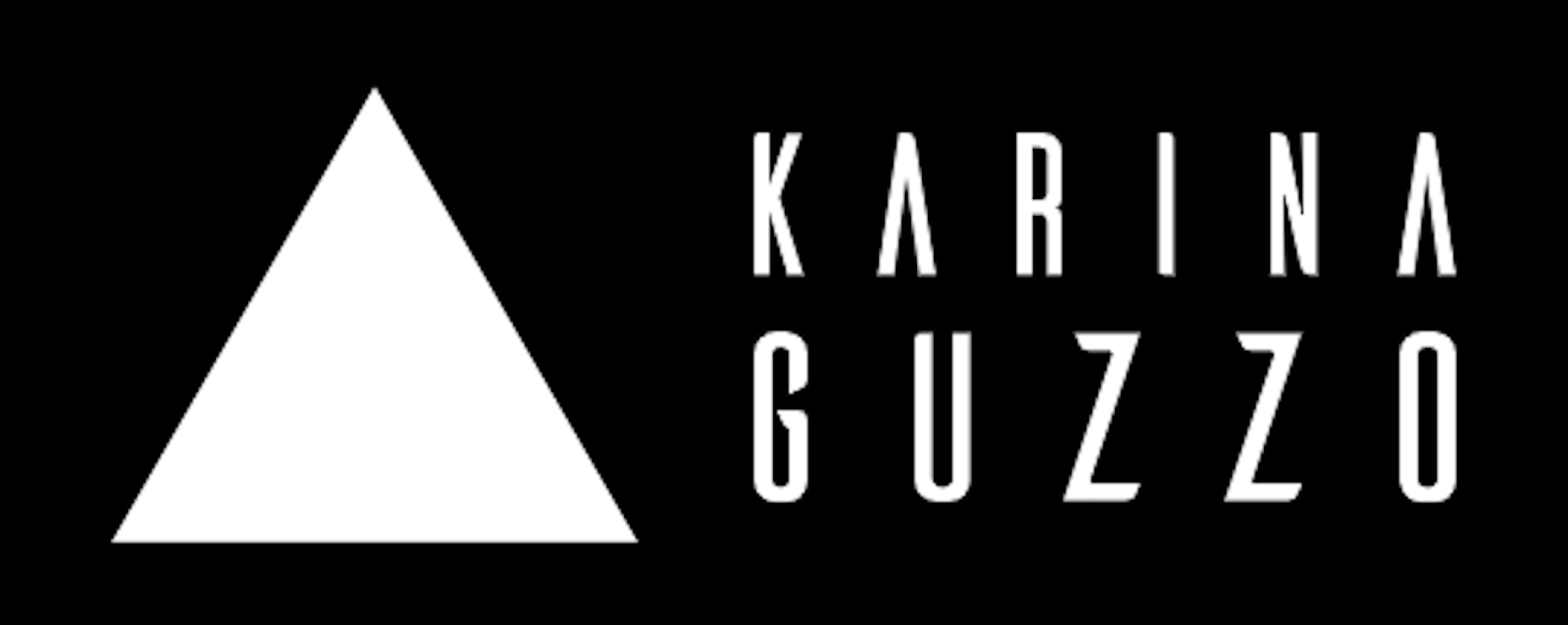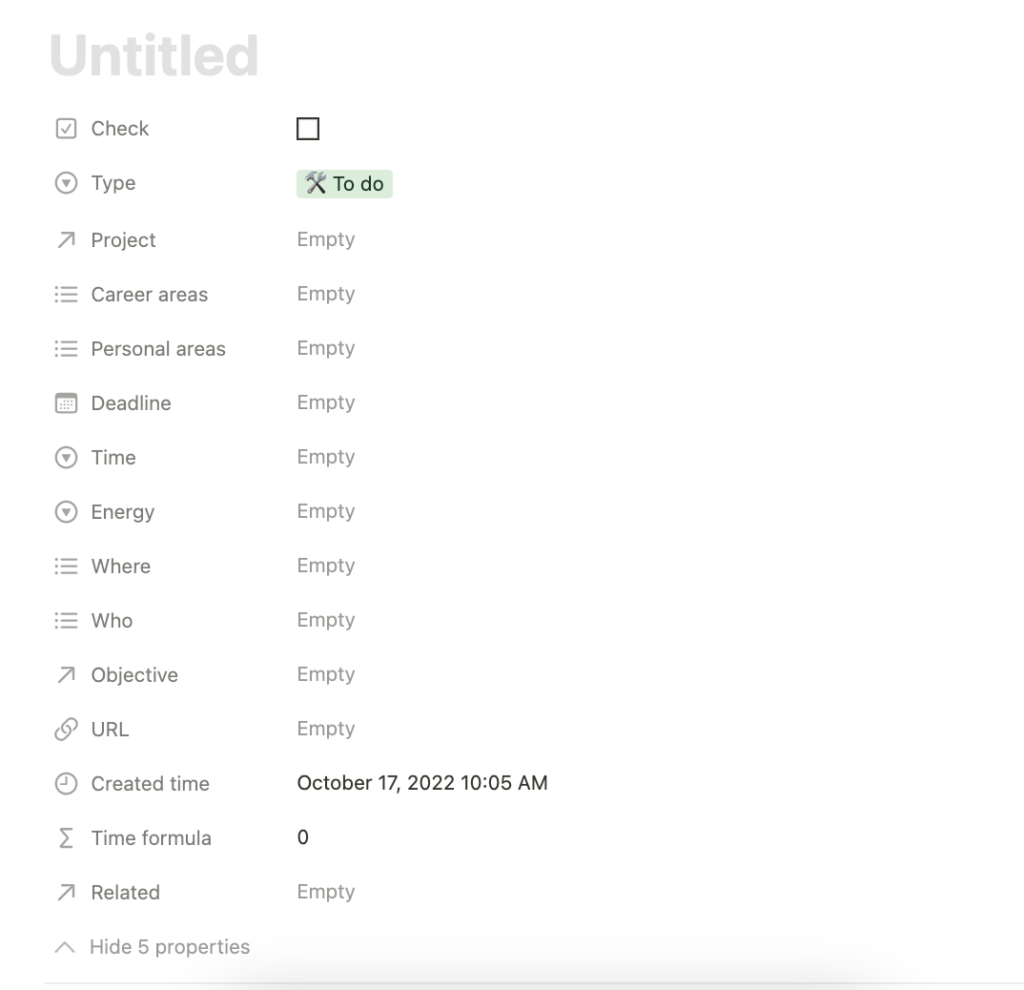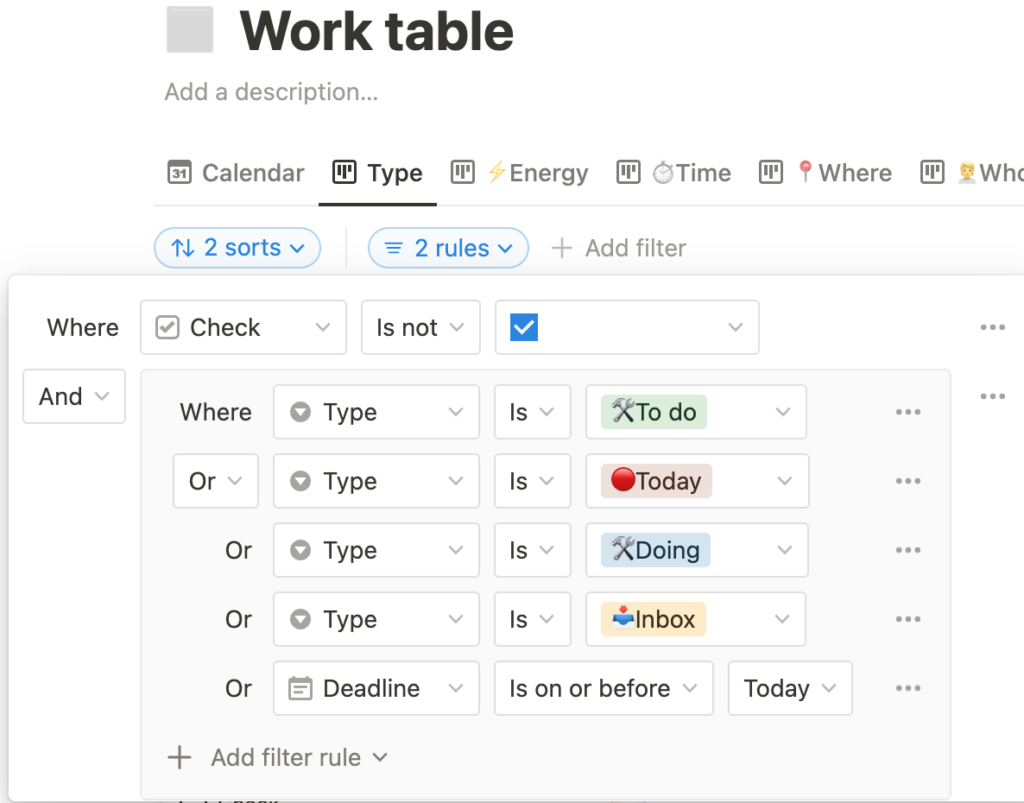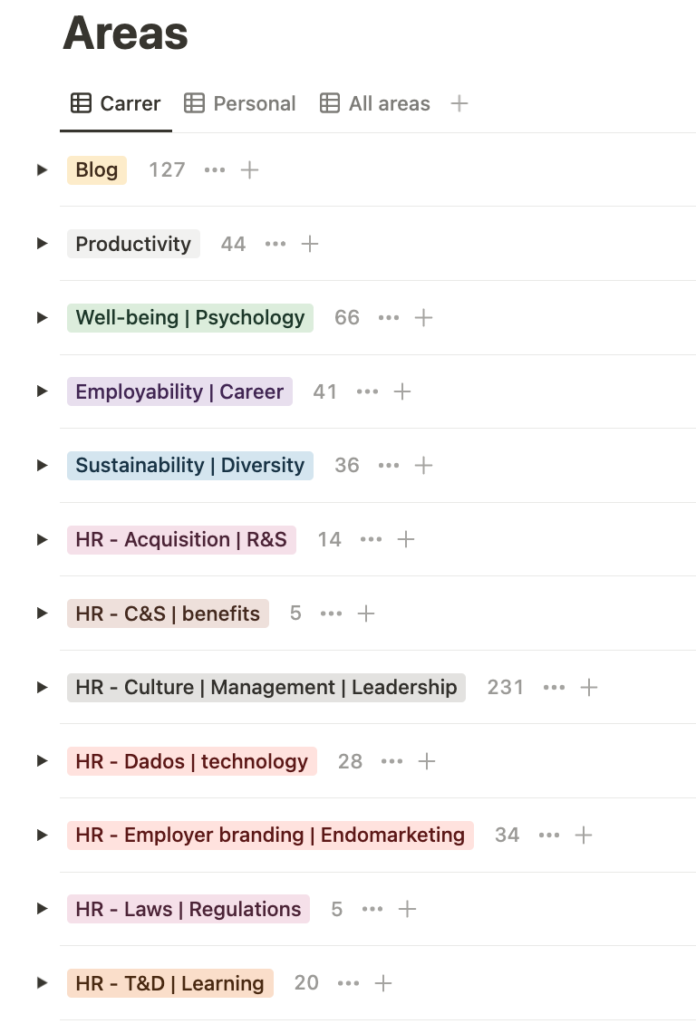In early 2021 I started registering my own productivity system. The initial idea was just to document my workflow in order to be able to understand the evolution and shape of what I’ve developed over the years that today I do intuitively.
Writing and detailing in words and flowcharts have made me consciously realise the dimension of what I already intuitively did, while also giving me the opportunity to refine and rethink my system. That eternal process of discovery and construction.
I believe that a productivity system is our manner of dealing with a workday. The intuitive way we start, develop and end our day: where I click first, which page I open, what I silence, how I make decisions, where I look for information and how I categorise and process everything that comes to me.
I’m the type of person who needs to feel my feet firmly on the ground to perform. I like structure, method, and knowing how to explain to other people what I’m doing. This trait definitely doesn’t compete with my creativity, actually, it facilitates it. Understanding this was transformative to be able to manage large projects and move towards my life goals.
This need of mine to have a clear structure is visible in my language: I have the habit of grouping behaviours, ideas, and actions into categories. I can easily make associations and connections with things that logically don’t match and harmonise opposites, ambiguities, and contradictions. It’s the part of the process I love the most.
This characteristic of mine helped me to sculpt my vision of productivity and divide it into three categories: Plan, Execute and Organise.
These moods just seem like actions, but to me, they are states of mind. They have different characteristics of energy, behaviour, and result. Without further ado, let’s go to each one of them:
Planner mood
Energy: high.
Behaviour: decision-making
Result: high impact in the long term
Actions: reviews (weekly, monthly etc.), planning, future investment actions such as study and feedback meetings
When you are in this state, it’s the boss you have to call to be at the table. The boss isn’t available all the time, probably a few hours a day. You need to be objective and ask them the right questions and not waste their time, after all, their time is scarce and expensive. Bosses make high-value decisions that will impact the days, months, and even years to come.
As David Allen suggests about the weekly review: you only need to think once a week. That is, when planning you make decisions for the rest of the week, and during the week you only need to execute what was defined previously.
I tend to engage in this mood in the morning when my energy level is highest. At that moment, I carry out project management, review my objectives and goals, decide on the next steps, and also study complex concepts. As far as other people are concerned, I hold meetings where I must mobilize people and convey a vision based on values, or even when I need to negotiate and persuade in favour of something bigger. This mood usually doesn’t last long, in my day I’ve noticed that its limit is a maximum of 3 hours of high quality. Then I must jump to another mood.
Executor mood
Energy: medium
Behaviour: fulfilling what was agreed
Result: medium impact in the short and medium term
Actions: follow the task list and appointments on the calendar
According to the decisions of the planner, the executor follows what has been defined. So with a good job done by our boss, the executor doesn’t need a lot of energy to decide what is a priority or not, they can complete tasks much faster and with higher quality.
The classic advice to make the executor’s life easier is to write the titles of tasks clearly, this is the key to a happy and stress-free executor, for example:
Instead of: “email to the extension of the contract”
Write: “gather information to decide on the time needed for contract extension”
Instead of: “start xpto project”
Write: “gather expectations about xpto project”
In addition to keeping your to-do list and calendar clear and intuitive, our executor must perform better with empty and catalogued inboxes, references, documents, and information. Our next performer does that job: the organizer.
Organizer mood
Energy: Low
Behaviour: putting everything in its right place, categorising and labelling
Result: low, medium and high impact with results already in the short term
Action: emptying and processing inboxes (emails, WhatsApp, Slack etc) and categorizing and labelling files, information, and references (on the computer, cell phone, notes, etc.)
End of the year, Fridays, and periods of big changes are when we see the organizer the most. They appear when everything looks like a complete mess, or when we are out of breath and need to start from 0. But it doesn’t have to be that way. My experience says that you should trigger this mood at least every 48 hours for better productivity.
The organizer’s focus is to facilitate the data for our planner and make the executor’s work more fluid and agile. We have information in abundance, what is lacking is accessing it intelligently, quickly and accurately.
In the GTD system combined with Notion it is possible to categorise actions by energy level. We might start the day with the highest energy activities (planning), then medium energy (execution) and at the end of the day with low energy activities (organisation).
All these modes are codependent. They are like an orchestra. Naturally, these moods merge during the day:
- We also replan while executing, it’s normal to change the route and have to think of a new path while the train is already moving.
- In the same way, we also organise while we are executing (we take care of the dishes while we cook).
- When we are planning, it is normal to stop and finish some quick tasks.
The advantage of thinking about these 3 moods is being able to respect and make better use of our physical and mental energy levels, making the most of our creativity and time. As we know, productivity and mental health are closely linked.
In addition to the advantage of going at your own pace, you can also understand and listen to what your environment and situation need most. It is often impossible to execute without minimal organisation, some people simply paralyse (who can cook in a messy kitchen without washing the dishes?). Probably a full email inbox (organisation) and many pending tasks (execution) prevent you from taking time to think about the strategy (planning), which in many cases is what brings us the most results.
In this way, listening to our body and reading the environment from these 3 moods offers us a clearer perspective of where we most need to act at that moment. Moments of crisis benefit from new planning. Sad and seemingly aimless moments benefit greatly from the organisation, after all, who doesn’t feel more motivated after tidying up their room?













